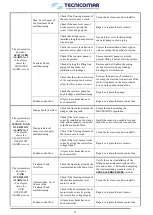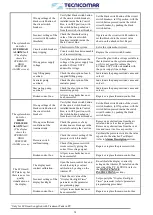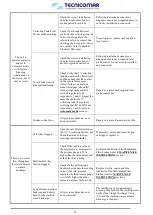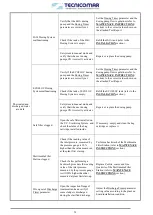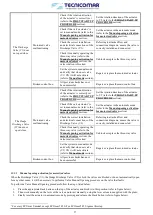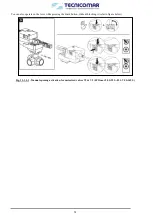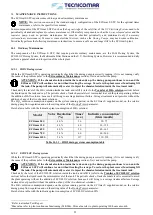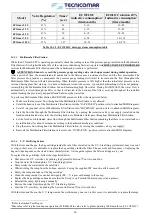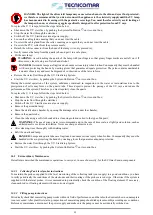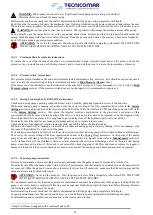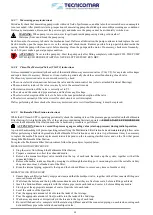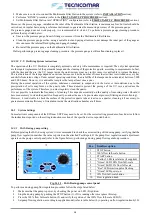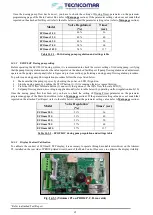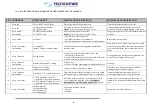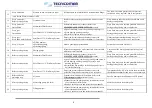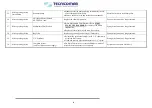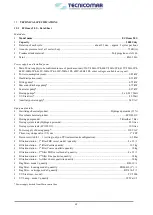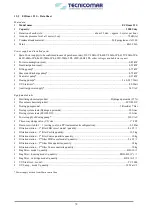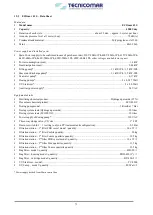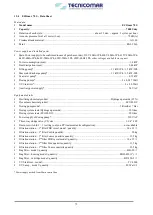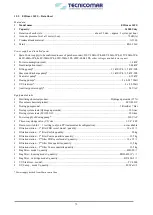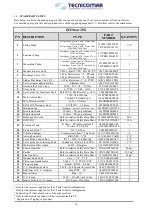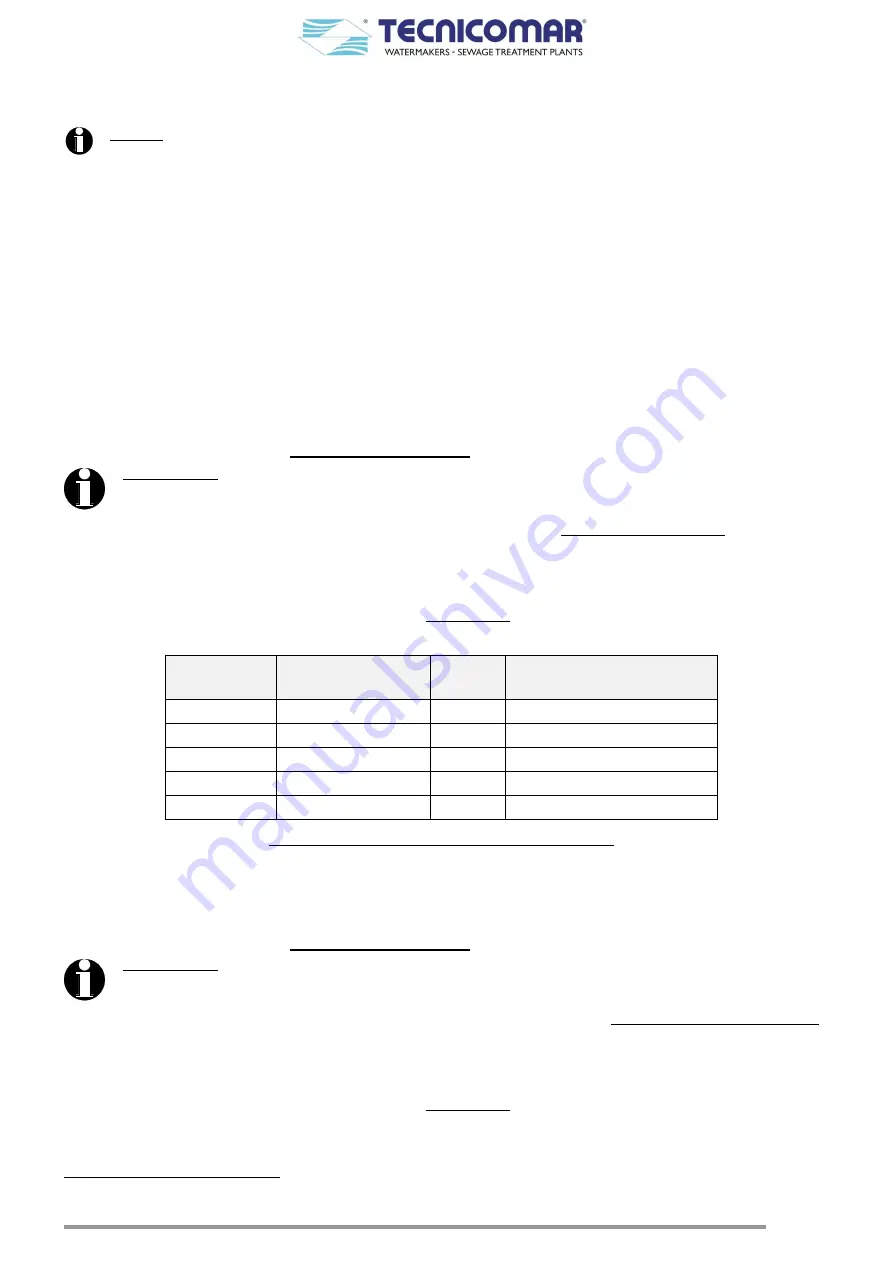
59
14
MAINTENANCE INSTRUCTIONS
The ECOmar S STP requires some ordinary and extraordinary maintenance.
NOTE:
This section concern only the standard supply configuration of the ECOmar S STP for the optional items
maintenance, refer to the specific item manual.
Some components of the ECOmar S STP, such us the
bag cartridge
of the
safe filter
of the
U.V Sterilizing System
, need to be
periodically cleaned and replaced (
ordinary maintenance
). Other safety components, such as the
3-way solenoid valves
and the
seawater pump
, need no periodic maintenance but must be checked periodically and maintained only if necessary
(
extraordinary maintenance
). Moreover some electrical devices, such as the
Dosing Pumps,
may need some
calibration
.
Periodically perform the following maintenance instructions to ensure a safe use and longer life to the ECOmar S plant.
14.1
Ordinary Maintenance
The components of the ECOmar S STP, that require periodic ordinary maintenance, are the H
2
O
2
Dosing System, the
ECOFLOC Dosing System, the Multimedia Filter Station and the U.V. Sterilizing System. However it is recommended to daily
perform a general check and inspection of the whole plant.
14.1.1
H2O2 Dosing system
While the ECOmar S STP is operating periodically check that the dosing pump is correctly running; if it is not running verify
the cause of the problem (refer to the
Extraordinary Maintenance
section), fix it and restart the pump.
ATTENTION: If the chemical solution inside the tank ends up, the dosing pump continues to run and the
ECOmar S STP will continue to run without treating the sewage. To restore the plant correct functioning fill
the tank. The pump will automatically re-start to inject the chemical solution inside the treatment tank.
Check daily the level of the H
2
O
2
solution inside the tank; and refill it (refer to the
Transfer of H
2
O
2
solution
section) before
the liquid inside the tank ends up. The periodic check of tank chemicals level is essential to avoid the plant operating without
the addition of H
2
O
2
solution; because it will bring to a sewage treatment failure. Sewage treatment is not possible without the
addition of any of the two chemical solutions.
The H
2
O
2
solution consumption depends on the system running period, on the ECOmar S supplied model, on the relative
dosing pump flow regulation and on the setting value of the Dosing Timer parameter.
Here below a table with the indicative plant consumption of H
2
O
2
solution:
Model
Valve Regulation
(%)
Timer
*
(sec.)
Indicative consumption
(liters/month)
ECOmar 20 S
40 %
26
20÷75
ECOmar 32 S
40 %
40
30÷120
ECOmar 45 S
40 %
50
40÷165
ECOmar 70 S
54 %
60
60÷260
ECOmar 145 S
54 %
137
115÷530
Table 14.1.1 – H2O2 dosing system consumption table
14.1.2
ECOFLOC Dosing system
While the ECOmar S STP is operating periodically check that the dosing pump is correctly running; if it is not running verify
the cause of the problem (refer to the
Extraordinary Maintenance
section), fix it and restart the pump.
ATTENTION: If the chemical solution inside the tank ends up, the dosing pump continues to run and the
ECOmar S STP will continue to run without treating the sewage. To restore the plant correct functioning fill
the tank. The pump will automatically re-start to inject the chemical solution inside the treatment tank.
Check daily the level of the ECOFLOC solution inside the tank; and refill it (refer to the
Transfer of ECOFLOC solution
section) before the liquid reach the minimum level of the tank. The periodic check of tank chemicals level is essential to avoid
the plant operating without the addition of ECOFLOC solution; because it will bring to a sewage treatment failure. Sewage
treatment is not possible without the addition of any of the two chemical solutions.
The H
2
O
2
solution consumption depends on the system running period, on the ECOmar S supplied model, on the relative
dosing pump flow regulation and on the setting value of the Dosing Timer parameter.
Here below a table with the indicative plant consumption of ECOFLOC solution 20%:
*
Refer to attached Test Report
†
Max value refer to plant continuous functioning (24h/24h). Min value refer to plant operating 160 hours a month.









